According to the Catholic Stations of the Cross, there was once a woman who wiped the sweat and blood from the face of Jesus Christ with a cloth as he endured the torturous walk carrying his own cross to Calvary. This woman is portrayed in the Sixth Station out of the complete Fourteen, which is entitled ‘Veronica Wiping the Face of Jesus’. Legend tells the rest of the story as a miraculous one. Some believe that Christ’s sweat, having left an imprint of his face on the cloth, transferred healing properties into its fabric. Others have insisted over time to have laid their hands on the relic itself, (with some actual claims of being witness to its healing power), or to have been in possession of a replica.
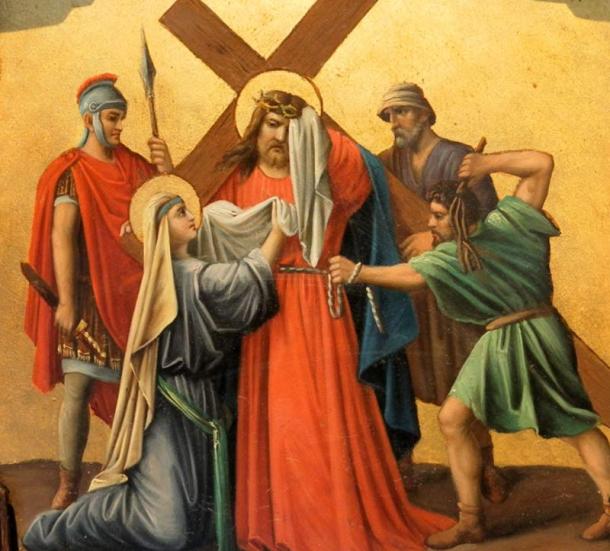
Veronica wiping the face of Jesus, Saint Symphorian church of Pfettisheim, Bas-Rhin, France. ( public domain )
Pope Benedict Examines the Veil
Pope Benedict XVI himself even made a trip to a remote monastery in the mountains of Manoppello, Italy, to assess such a claim in 2006. Most recent claims have come from the small town of Madisonville, Tennessee, where a replicated painting of the piece, having been lost for 150 years, was stolen from a mobile home and later taken to St. Joseph the Worker Church. The history of this event, the veil itself, and subsequent related artistic pieces are the subjects of numerous archival and scholarly works, which have been examined with scrutiny over time.
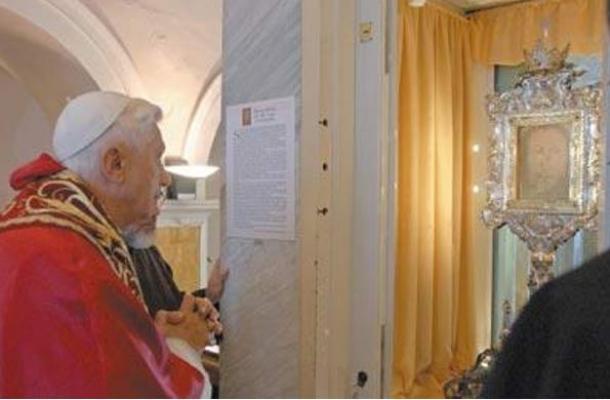
Pope Benedict XVI looks at the Veronica`s Veil during a visit to the Saint Veil monastery in Manoppello, central Italy ( Times of Malta )
The Stations of the Cross
It is noteworthy that Veronica and the veil are well-established elements in the Stations of the Cross, (a practice of the Catholic Church developed as symbol of the original pilgrimages made by early Christians in representation of Jesus’ excruciating voyage to Golgotha. The fourteen Stations are considered to exemplify the most prominent events of this journey, which are remembered in prayer and meditation by the devout as they pass each one), and it is said to be near the time of these early pilgrimages that her event’s inclusion in the Stations took place. Some speculate modernized representations occurred alongside the ensuing practice of many such participants creating shrines from pieces brought home from the pilgrimages, such as oils from lamps burning near Christ’s tomb and other memorabilia considered by some as souvenirs from the trip.
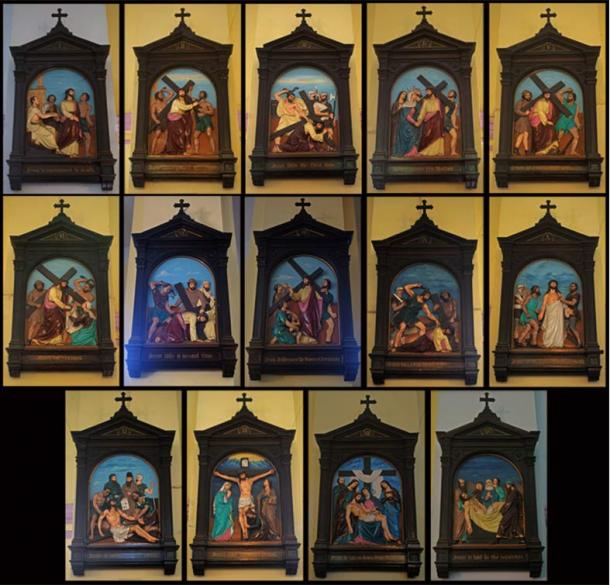
Artist’s depiction of the fourteen stations of the cross, Portuguese Church, Kolkata. ( public domain )
Who is Veronica?
Although the specific incident with the veil has no mention in the Bible, it has been compared in the Acts of Pilate (an apocryphal piece also named the ‘Gospel of Nicodemus’) to a woman noted throughout the New Testament gospels as having touched Jesus’ robes and been instantly healed of a bleeding malady (Mark 5:24-34; Matthew 9:18-26; Luke 8:40-56). The Acts of Pilate are widely believed to be the records of Pontius Pilate himself (the Roman governor of Judea said to be responsible for Christ’s crucifixion ), written during the time of his governorship. However, it has been noted by scholars that the records are composed with strange irregularity in style and structure, as if written by numerous persons rather than just one. Such irregularities have prompted some to question the authenticity of these documents.

Saint Veronica holding the veil depicting the face of Jesus, by Hans Memling. ( public domain )
Some curiosity has also arisen due to the use of the name Veronica. Translated from Latin, the terms “Vera”, meaning “clear or true,” and “Icona,” (or the Greek “Eikon”), meaning “image,” together form the name “Veronica,” or “True Image.” Yet the name Veronica has been attributed both to the woman who wiped Christ’s face and additionally in early Christian history to the gospel story of the woman’s touching/healing by Jesus’ robes (also called ‘Bernice’ or ‘Berenice’, meaning ‘bearing victory’, in Greek versions), as if they are the same person.
The Acts of Pilate is thought to be the first occasion of the use of the name; in Chapter VII of the piece is mentioned, “And a certain woman named Bernice (Veronica in the Latin) crying out from afar off said: ‘I had an issue of blood and touched the hem of His garment and the flowing of my blood was stayed which I had twelve years.’ While some felt at this time that it was possible the two stories could be about the same woman, there is no mention of her name or her wiping of his face in the gospel narratives.
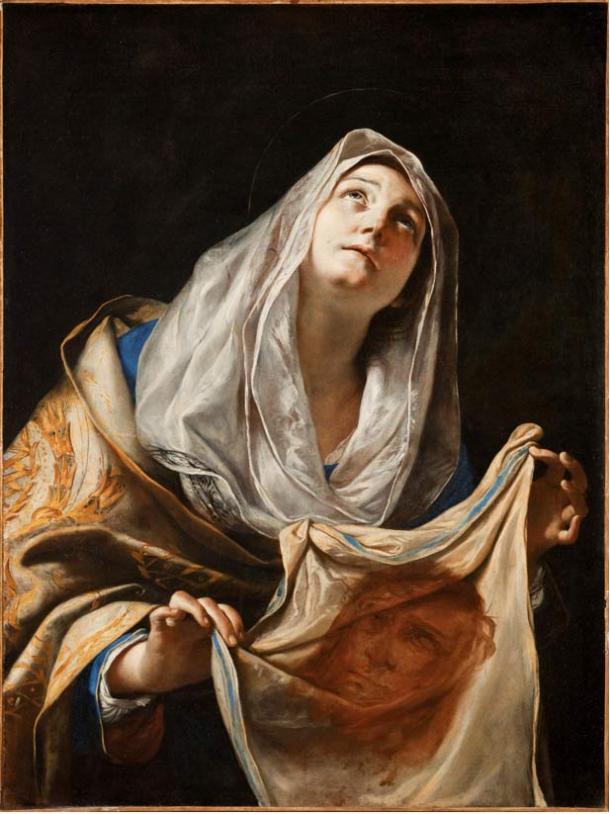
St. Veronika, painted by Mattia Preti. ( public domain )
In 680 A.D., however, the connection is clearly made for the first time in the writing of The Avenging of the Savior, also called The Cure of the Emperor Tiberius, where Veronica is mentioned both as the bleeding woman healed by Jesus’ robes and the one who later wiped his face. This connection, as well assertions of the veil’s healing of the Emperor Tiberius of leprosy (and many others also present with him who were suffering from various disorders and maladies), was established in several passages within this work.
Frosty and the Veil
The most recent discussion of the replica in Tennessee came to be after the theft of the item from a mobile home belonging to a man known only as “Frosty”. The thief, named Kelly Ghormley, was said to have stolen the piece from 73-year-old Frosty’s home, later taking it to the nearby St. Joseph the Worker Church in an endeavor to sell it to them. The church notified the authorities after assessing the authenticity of the cloth, subsequently interviewing Frosty himself, who claimed the item had been in his home cupboard for seventeen years and he had no idea how it originally came to be there. The painting, considered by the church to be one of a rare few made based on the original veil, was said to be blessed by Pope Leo XIII.
The Intriguing Characteristics of the Manoppello Veil
There are several remarkable traits attributed to the piece the Pope examined in Manoppello, a piece believed by many to be the relic stolen from the Vatican Basilica in 1608. The image on the veil shows up identically on both sides of the cloth itself, which is stated as a characteristic impossible to have been created using any of the ancient means of the time. According to a Vatanicanist for Germany’s Die Welt named Paul Badde, the fabric’s image was not painted, as the fabric itself is of a very rare fiber called ‘byssus’, upon which no one can possibly paint. Badde insists the piece is authentic and is, in fact, the original Veronica’s Veil, and thus – the actual face of Christ.
The University of Bari’s Professor Donato Vittore examined the piece using ultraviolet light and found the image to have flecks of a reddish brown substance which definitely is not paint, and in fact was created using an unidentified substance – which some speculate may have been the blood drops caused by Christ’s wearing of the crown of thorns. Others have compared the piece to the renowned Shroud of Turin, considered by millions to be the authentic burial cloth used to wrap Christ’s body, and found similarities in face shape, hair length and other identifying features of the beard and forehead.
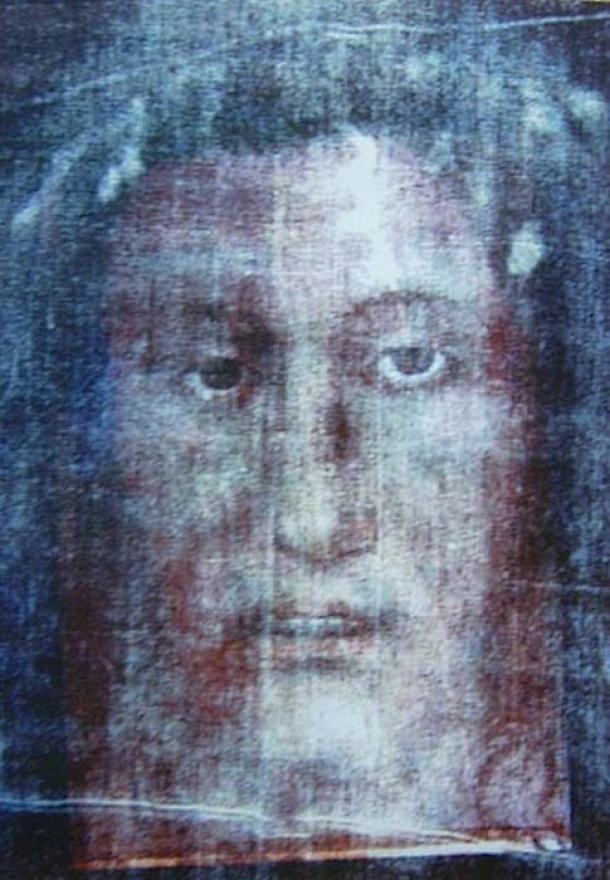
Superposition of the Veil of Manoppello on a negative of the Shroud of Turin (Table in the Penuel Exhibition in Manoppello, Italy). (Brother Benno/ CC BY-SA 3.0 )
Arguably the most fascinating aspect of the piece at Manoppello is the fact that the image becomes invisible when held at a certain angle by the viewer. This trait is a rare one throughout history as well, and was once considered miraculous in ancient times. German Jesuit Fr. Heinrich Pfeiffer, a professor of Christian Art History, maintains, “There are few such objects in history. This is not a painting. We don’t know what the material is that shapes the image, but it is the color of blood.”
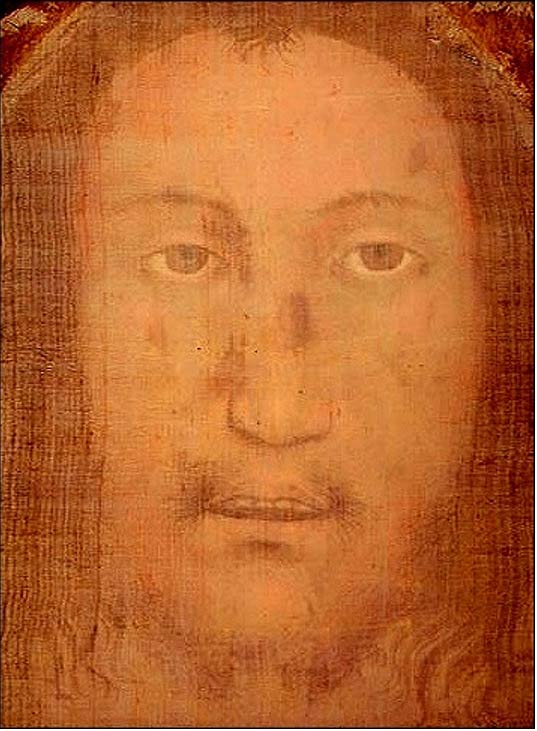
The Manoppello Veil of Veronica. ( public domain )
Although Pope XVI did make the trip in 2006 to Manoppello in order to view this piece in person, he did not make any claims as to his opinion on its authenticity. Instead, he made reference to the symbolic and ongoing search all Christians should make in relationship to their savior, Jesus Christ. The Pope stated at the time, “Searching for the face of Christ must be the desire of all Christians.”
Although many skeptics remain amidst the scholarly developments and church writings, the exciting discoveries appear to be ongoing regarding the mysterious Veil of Veronica.
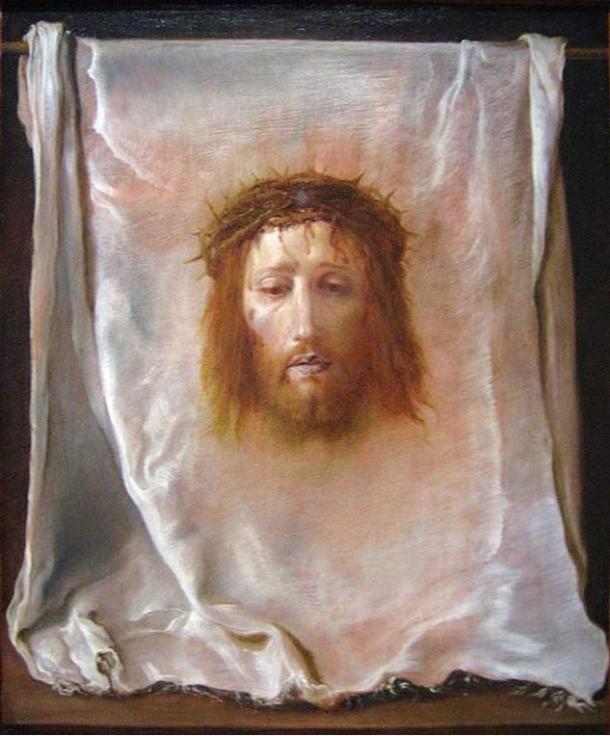
‘The Veil of Veronica’ by Domenico Fetti, 1588 – 1623. ( public domain )
Top Image: Two angels holding the Veil of Veronica . Source: jorisvo /Adobe Stock
Updated on May 28, 2021.
 RSS Feed
RSS Feed















 May 29th, 2021
May 29th, 2021  Awake Goy
Awake Goy  Posted in
Posted in  Tags:
Tags: 













